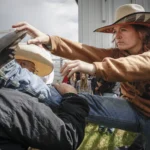Wyoming Wonders: Traditional Bourbon That’s 100% Wyoming
- Published In: Other News & Features
- Last Updated: Jul 04, 2022
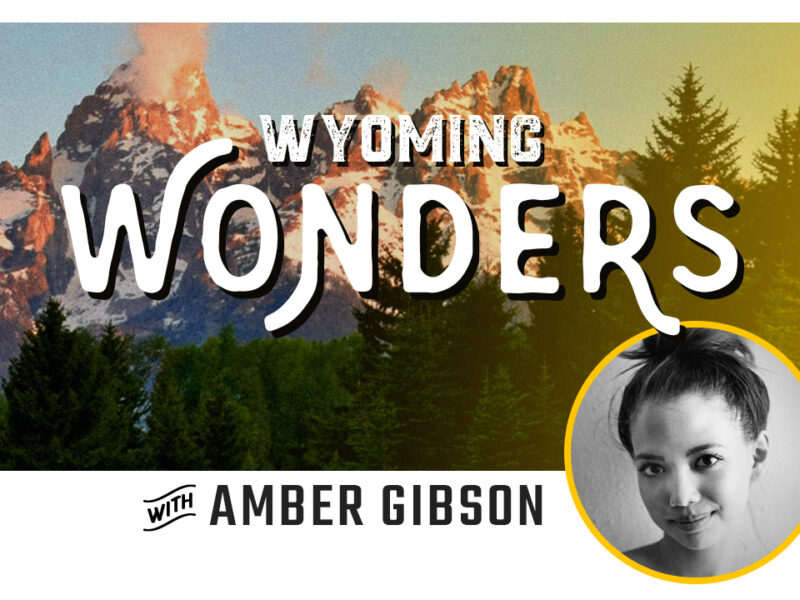
By Amber Gibson
Special to the Wyoming Truth
Wyoming conjures images of cowboys, cattle and big blue skies, far from the rolling hills, racehorses and whiskeys of Kentucky. There hasn’t historically been a tradition of whiskey-making in Wyoming. In fact, when Wyoming Whiskey sold its first bottle 10 years ago, it was the first legal distillery in the state.
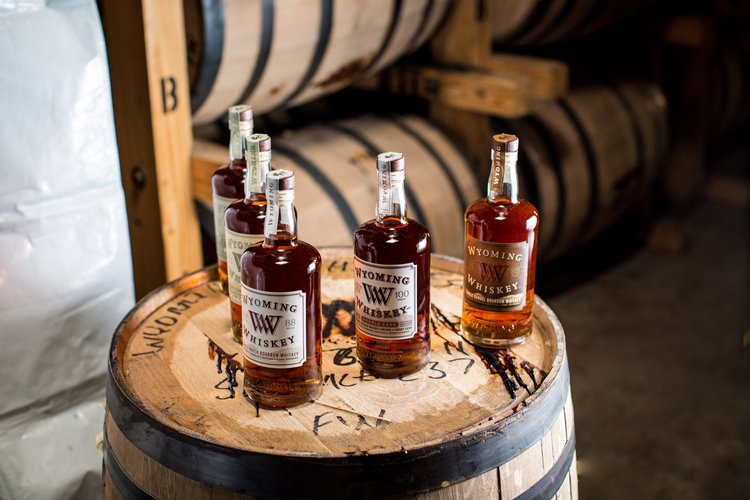
Fourth generation Wyoming cattle ranchers Brad and Kate Mead conceived the idea for Wyoming Whiskey in 2006. When the dynamics of ranching changed, the husband-and-wife team gave up their Teton National Park grazing lease and sold a large piece of their property. But the couple wanted to continue ranching, so they purchased a 1,000-acre ranch in Kirby. Hoping to diversify their investments and interests, they brainstormed other agricultural business opportunities. Kate originally wanted to start a winery, but a soil analysis quickly dashed that plan. Making whiskey seemed to be the more prudent path given the bountiful corn, wheat, rye and barley available in Byron, about 100 miles north of Kirby.
At the time, the craft distilling industry in the United States was in its infancy and there was no blueprint for the Meads to follow. Founding partners Brad Mead and David Defazio became friends while working in the same law office, but neither of them knew anything about making whiskey. So they turned to the experts at the Kentucky Bourbon Festival to learn the ropes and build their whiskey network. It was there that they met Steve Nally, previously a master distiller with Maker’s Mark for 33 years, who signed onto their project, helping them design the distillery and produce their first bottles.
“We wanted to make what we like to drink,” Defazio says. “Every drop in our bottles come from grains grown in Wyoming, which are cooked, fermented, distilled, barreled and bottled in Kirby, Wyoming.”
All Wyoming Whiskey, excluding Outryder, are bourbons made with a similar base limestone-filtered water and high wheat content of Kentucky bourbon. That wheat imparts a full, smooth-mouth feel. The bestselling Small Batch Bourbon, with its sweet caramel and honeycomb aroma, tastes like sugar cookies and candied orange peel, with a peppery, black tea finish.
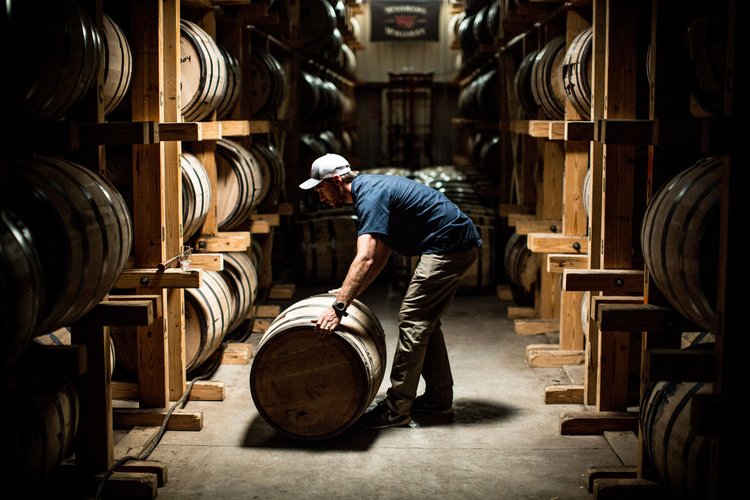
From the beginning, Wyoming Whiskey has been known for making traditional bourbon from an untraditional place. The company uses classic bourbon distilling methods and sources non-GMO ingredients exclusively from the Big Horn Basin in central Wyoming. The corn, wheat and barley for their mash bill is all grown locally in Kirby, Byron, Thermopolis and Riverton. Even the water is sourced from a mile-deep, limestone aquifer that hasn’t seen the light of day in more than 6,000 years – since the Bronze age.
“Water is definitely not just water,” says head blender Derek Sproveri. “This is soft, limestone filtered water, and we can use pretty much straight tap water for everything we do. It’s extremely close to the kind of water that the guys in Kentucky use to make their bourbon.” In Wyoming, the water is even more pristine, since it hasn’t been exposed to any pollutants, and, instead is preserved in an underground treasure trove.
Another element that makes Wyoming Whiskey so distinctly Wyoming? The harsh climate in which the whiskey is aged—what Defazio calls “the most unique [maturation environment] in the industry.”
On the hottest of days in the summer, barrels at the top of the warehouse can reach 132 F. In the depth of winter it hits 0 F. This extreme fluctuation helps draw flavor and sugars from the charred new American oak barrels into the whiskey, but the cold temperatures also prove to be a challenge because the barrels go dormant in the height of winter. Sproveri says the whiskey can take on an off-putting bitter flavor due to the tannic, gallic and lactic acids that are pulled into the juice. For that reason, Sproveri doesn’t harvest barrels from mid-November to May, but waits until the barrels start “breathing” again as they expand in the heat of summer to capture the sweet, smooth flavors they’re looking for.
In its first few years, Wyoming Whiskey produced less than 1,000 barrels annually. Today, the company has 15 full-time employees and produces up to 3,000 barrels per year. That’s still small in the over craft distilling landscape, but the brand is widely distributed in all 50 states through a partnership with Scotch whiskey juggernaut Edrington.
“Candidly, distribution was the most difficult component of this entire endeavor,” Defazio says. “We were concerned with these basic, fundamental questions of designing and building a facility and making great whiskey, but never anticipated how challenging distribution would be. Distributors are difficult to work with because they’re all about the bottom line. We needed somebody to help us build out brand image and were swimming against a really strong current with not a lot of headway.”
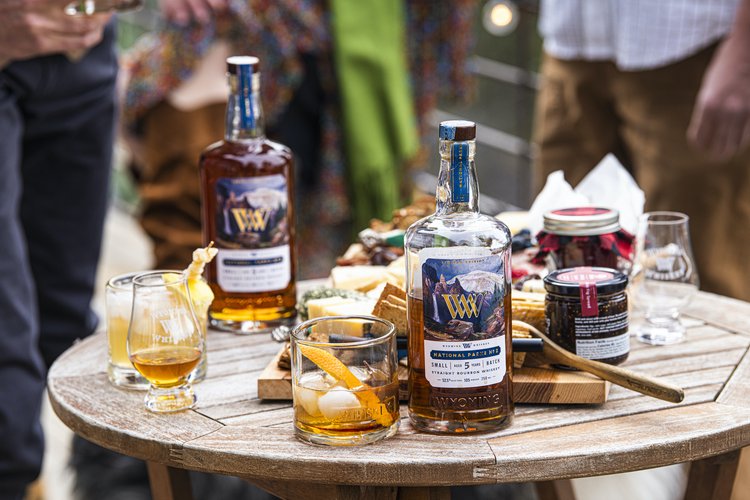
The breakthrough solution emerged in 2018: A partnership with Edrington, whose portfolio includes Macallan, Glenrothes, Highland Park Whisky and The Famous Grouse. Before Edrington assumed distribution responsibilities Wyoming Whiskey was available in just 20 states. “Our sales skyrocketed as a result,” Defazio says. Within Wyoming, the company’s whiskey can be found at The Liquor Store of Jackson Hole, West Side Wine and Spirits in Wilson, The Liquor Shed in Casper and Libations in Cody. Four Seasons Resort and Residences Jackson Hole also are big supporters.
Wyoming Whiskey’s flagship brand is its award-winning Small Batch Bourbon. Over the past decade, the distiller has released an array of bourbons and whiskeys including: Single Barrel, Barrel Strength, Double Cask Sherry-Finished Bourbon and Outryder Straight American Whiskey. Plus, each year the company honors the history, landscape and culture of Wyoming with its Wyoming-exclusive product offerings. Most recently, Wyoming Whiskey released a limited edition National Parks No. 2 straight bourbon whiskey in collaboration with Yellowstone Forever, the official nonprofit partner of Yellowstone National Park.
For every bottle sold, Wyoming Whiskey will donate $5 to Yellowstone Forever. The craft distillery also has committed to donating $150,000 to commemorate the park’s historic 150th year.








